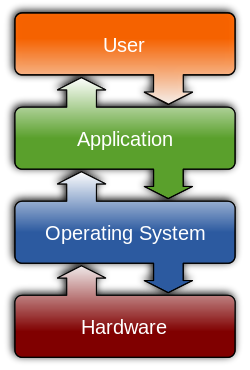Linux: Difference between revisions
Mr. MacKenty (talk | contribs) No edit summary |
Mr. MacKenty (talk | contribs) No edit summary |
||
| Line 25: | Line 25: | ||
|- | |- | ||
| Interrupts || perf | | Interrupts || perf | ||
|- | |- | ||
| Networks || netstat, top, tcpdump, iptraf, iftop, nmon | | Networks || netstat, top, tcpdump, iptraf, iftop, nmon | ||
Revision as of 08:48, 9 September 2016
Linux is a Unix-like and mostly POSIX-compliant computer operating system (OS) assembled under the model of free and open-source software development and distribution.[1]
The purpose of this page is provide practical resources to student to understand and use Linux.
Tools you can use to manage different parts of the Linux operating system:
| The OS manages | Linux tools you can use to understand what is going on |
|---|---|
| Memory | top, htop, free, vmstat |
| Processes | top |
| Files | File system, df, du, mount, lsof |
| Security | fstab, last, who, /var/log/auth.log |
| CPU Scheduling | perf |
| Devices, Device I/O | iotop, iostat |
| Interrupts | perf |
| Networks | netstat, top, tcpdump, iptraf, iftop, nmon |
